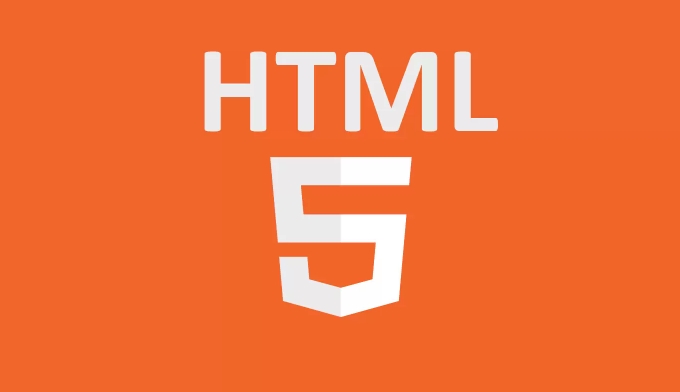Defining custom vocabularies using HTML5 Schema.org markup.
Jul 31, 2025 am 10:50 AMThe Schema.org tag helps search engines understand the structured data format of web page content through semantic tags (such as item scope, item type, itemprop); it can be used to define custom vocabulary, methods include extending existing types or using additionalType to introduce new types; in actual applications, keeping the structure clear, using official attributes first, testing code validity, and ensuring that custom types are accessible; precautions include accepting partial support, avoiding spelling errors, and choosing a suitable format such as JSON-LD.

Defining a custom vocabulary in a web page, using HTML5 combined with Schema.org structured data tags is a practical and effective way. It not only helps search engines better understand your website content, but also improves SEO results and even affects the display format in search results. The key is how to correctly apply the semantic tags of Schema.org to express the information you want to emphasize.

What is the Schema.org tag?
Schema.org is a project jointly initiated by Google, Microsoft, Yahoo, etc., aiming to provide a unified structured data format for web pages. It tells search engines what type of content a page element represents by adding specific semantic tags (such as itemscope , itemtype , itemprop ).
For example, if you have a movie review website, you can use <div itemscope itemtype="http://schema.org/Movie"> to mark a piece of information about the movie, and specify the title, director, rating, etc. through <code>itemprop . 
How to define a custom vocabulary?
While Schema.org provides a large number of predefined types (such as articles, products, events), sometimes what you need to express may not be in the standard list. At this time, you can introduce custom vocabulary by extending existing types or using additionalType .
For example, suppose you are doing a website about "crafts", and you want to define a subclass of "ceramic cups":

<div itemscope itemtype="http://schema.org/Product"> <link itemprop="additionalType" href="https://yourdomain.com/vocab/CeramicCup" /> <h1 itemprop="name">Blue and white porcelain cup</h1> <span itemprop="description">Hand-drawn traditional style ceramic cup</span> </div>
In this way, search engines can know that this is a special "Product" and can provide more accurate understanding and indexing based on the additional information you provide.
Several suggestions in practical applications
- Keep the structure clear : Each item scope corresponds to an entity to avoid being too deep nested.
- Priority is given to using officially supported attributes : If there are already standard attributes that can meet the needs, do not customize them easily.
- Testing tools are important : You can use Google's Rich Results Test or Structured Data Testing Tool to check whether you have written it correctly.
- Custom types must be accessible : If you use
additionalType, it is best to provide some explanations on the corresponding URL to facilitate crawler identification.
Notes and FAQs
- It doesn't matter if you are not fully supported by search engines : even if some custom words have no obvious effect for the time being, they may be used in the future.
- Avoid misspelling : typos like
itemprowill invalidate the entire structure. - Microdata vs JSON-LD : Although we are talking about HTML5 microdata writing, it is now more recommended to use JSON-LD, especially in front-end frameworks such as React and Vue, which are easier to manage.
Basically that's it. The key to making good use of Schema.org is to understand the content structure you want to describe and reasonably choose the combination of standards and custom types. Not complicated, but details are easy to ignore.
The above is the detailed content of Defining custom vocabularies using HTML5 Schema.org markup.. For more information, please follow other related articles on the PHP Chinese website!

Hot AI Tools

Undress AI Tool
Undress images for free

Undresser.AI Undress
AI-powered app for creating realistic nude photos

AI Clothes Remover
Online AI tool for removing clothes from photos.

Clothoff.io
AI clothes remover

Video Face Swap
Swap faces in any video effortlessly with our completely free AI face swap tool!

Hot Article

Hot Tools

Notepad++7.3.1
Easy-to-use and free code editor

SublimeText3 Chinese version
Chinese version, very easy to use

Zend Studio 13.0.1
Powerful PHP integrated development environment

Dreamweaver CS6
Visual web development tools

SublimeText3 Mac version
God-level code editing software (SublimeText3)

Hot Topics
 What is Microdata? HTML5 Explained
Jun 10, 2025 am 12:09 AM
What is Microdata? HTML5 Explained
Jun 10, 2025 am 12:09 AM
MicrodataenhancesSEOandcontentdisplayinsearchresultsbyembeddingstructureddataintoHTML.1)Useitemscope,itemtype,anditempropattributestoaddsemanticmeaning.2)ApplyMicrodatatokeycontentlikebooksorproductsforrichsnippets.3)BalanceusagetoavoidclutteringHTML
 Microdata in HTML5: The Key to Better Search Engine Ranking
Jun 12, 2025 am 10:22 AM
Microdata in HTML5: The Key to Better Search Engine Ranking
Jun 12, 2025 am 10:22 AM
MicrodatasignificantlyimprovesSEObyenhancingsearchengineunderstandingandrankingofwebpages.1)ItaddssemanticmeaningtoHTML,aidingbetterindexing.2)Itenablesrichsnippets,increasingclick-throughrates.3)UsecorrectSchema.orgvocabularyandkeepitupdated.4)Valid
 Handling reconnections and errors with HTML5 Server-Sent Events.
Jul 03, 2025 am 02:28 AM
Handling reconnections and errors with HTML5 Server-Sent Events.
Jul 03, 2025 am 02:28 AM
When using HTML5SSE, the methods to deal with reconnection and errors include: 1. Understand the default reconnection mechanism. EventSource retrys 3 seconds after the connection is interrupted by default. You can customize the interval through the retry field; 2. Listen to the error event to deal with connection failure or parsing errors, distinguish error types and execute corresponding logic, such as network problems relying on automatic reconnection, server errors manually delay reconnection, and authentication failure refresh token; 3. Actively control the reconnection logic, such as manually closing and rebuilding the connection, setting the maximum number of retry times, combining navigator.onLine to judge network status to optimize the retry strategy. These measures can improve application stability and user experience.
 What are the key features introduced in HTML5?
Jun 19, 2025 pm 11:57 PM
What are the key features introduced in HTML5?
Jun 19, 2025 pm 11:57 PM
HTML5introducedkeyfeaturesthattransformedwebdevelopment.1.Semanticelementslike,,andimprovedstructure,readability,andaccessibility.2.Nativemultimediasupportviaandtagseliminatedrelianceonplugins.3.Enhancedformcontrolsincludingtype="email"andr
 Integrating CSS and JavaScript effectively with HTML5 structure.
Jul 12, 2025 am 03:01 AM
Integrating CSS and JavaScript effectively with HTML5 structure.
Jul 12, 2025 am 03:01 AM
HTML5, CSS and JavaScript should be efficiently combined with semantic tags, reasonable loading order and decoupling design. 1. Use HTML5 semantic tags, such as improving structural clarity and maintainability, which is conducive to SEO and barrier-free access; 2. CSS should be placed in, use external files and split by module to avoid inline styles and delayed loading problems; 3. JavaScript is recommended to be introduced in front, and use defer or async to load asynchronously to avoid blocking rendering; 4. Reduce strong dependence between the three, drive behavior through data-* attributes and class name control status, and improve collaboration efficiency through unified naming specifications. These methods can effectively optimize page performance and collaborate with teams.
 HTML5 Input types: does it improve accessibility?
Jun 20, 2025 am 12:49 AM
HTML5 Input types: does it improve accessibility?
Jun 20, 2025 am 12:49 AM
Yes,HTML5inputtypesimproveaccessibilitybyprovidingsemanticmeaningtoassistivetechnologies.1)Emailinputtypeoptimizeskeyboarddisplayandscreenreaderannouncements.2)Dateinputtypeoffersacalendarwidget,aidinguserswithmotordisabilitiesandensuringconsistentda
 How to control HTML5 video and audio playback using JavaScript?
Jun 24, 2025 am 12:38 AM
How to control HTML5 video and audio playback using JavaScript?
Jun 24, 2025 am 12:38 AM
To control HTML5 video and audio playback using JavaScript, master the following key operations to achieve basic control. 1. Start or pause play can be achieved through the .play() and .pause() methods, and it is recommended to trigger through user interaction to be compatible with mobile browsers; 2. Control the volume and set the value from 0 to 1 through the volume attribute, and switch by setting the muted attribute to true or false; 3. Jump to a specific time to play, you can use the currentTime attribute, which supports direct assignment or increase or decrease the current time, and it is recommended to add error handling; 4. Listen to the playback status changes can be achieved through events such as play, pause, ended and timeupdate.
 Receiving real-time data with HTML5 Server-Sent Events (SSE).
Jul 02, 2025 pm 04:46 PM
Receiving real-time data with HTML5 Server-Sent Events (SSE).
Jul 02, 2025 pm 04:46 PM
Server-SentEvents (SSE) is a lightweight solution provided by HTML5 to push real-time updates to the browser. It realizes one-way communication through long HTTP connections, which is suitable for stock market, notifications and other scenarios. Create EventSource instance and listen for messages when using: consteventSource=newEventSource('/stream'); eventSource.onmessage=function(event){console.log('Received message:',event.data);}; The server needs to set Content-Type to text/event






